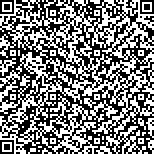| 摘要: |
| 采用生物素标记的(CA)15探针和磁珠富集法构建了大珠母贝(Pinctada maxima)微卫星DNA文库,随机挑选1200个菌落,经PCR筛选得到298个候选克隆,成功测序246个, 分析获得251个微卫星序列,其中完美型、非完美型和混合型分别占63%、32%和5%。除探针中使用的CA重复外, 还得到AT、GT、TC、AG、GC、TAA、CAA、AGG、GATA、GACA、GTGC、CGTC、GACG、CTGT等重复序列。设计引物90 对, 挑选其中30对合成并筛选出21 对能在大珠母贝基因组有效扩增的引物。种群PCR扩增后利用变性聚丙烯酰胺凝胶电泳法进行检测, 获得了10个多态位点, 共检测出59个等位基因, 片段长度范围为133~444 bp。各位点等位基因数2~8 个, 平均等位基因数5.9个; 有效等位基因数为1.342 3~6.000 0, 平均为4.124 0; 多态性信息含量(CPI)为0.222 5~0.811 8, 平均0.7179; 期望杂合度(He)为0.259 3~0.847 5, 平均0.717 9; 观测杂合度(Ho)为0.300 0~0.800 0, 平均0.533 3。这些微卫星多态性标记的获得, 为进一步开展大珠母贝遗传育种、保护生物学和种群遗传多样性等研究奠定了一定基础。 |
| 关键词: 大珠母贝(Pinctada maxima) 磁珠富集法 微卫星 遗传多样性 |
| DOI: |
| 分类号: |
| 基金项目:国家863 计划项目(2006AA10A415); 国家科技支撑计划项目(2007BAD29B01-5); 广东省科技推广项目(A200701C02, A200-899C04, A200900A07); 中央级公益性科研院所基本科研业务费资助项目(2007TS07, 2009YD02) |
|
| Isolation and screening of microsatellite DNA markers from silver-lip pearl oyster Pinctada maxima |
|
LIU Ming,YU Da-hui,HUANG Gui-ju
|
| Abstract: |
| Microsatellite-enhanced genomic library of the silver-lip pearl oyster Pinctada maxima was constructed using the repeat-enrichment method with biotin-labeled oligos (CA)15 and streptavidin coated magnetic beads. From a total of 1200 randomly selected clones, 298 positive clones were acquired after PCR selection and 246 clones were sequenced successfully. Among others, 251 microsatellite sequences were discovered by hand, of which 159 were perfect (63%), 80 imperfect (32%) and 12 compound (5%). Besides the CA repeat, several other types of repeats were also detected, such as AT, GT, TC, AG, GC, TAA, CAA, AGG, GATA, GACA, and GTGC. Ninety pairs of primers were designed using Primer 5.0, 30 pairs were ynthesized, and 21 pairs were effective based on PCR amplification; and ten loci showed polymorphism as tested on a population. A total of 59 alleles were found, and the DNA fragment lengths of these alleles ranged from 133 to 444 bp. The number of alleles per locus was 2~8, with an average of 5.9. The number of effective alleles was 1.342 3~6.000 0, with an average of 4.124 0. The polymorphism information content (CPI) was 0.222 5~0.811 8, with an average of 0.671 4. The expected eterozygosity (He) ranged from 0.259 3 to 0.847 5, with an average of 0.717 9. The observed heterozygosity (Ho) ranged from 0.300 0 to 0.800 0, with an average of 0.533 3. The microsatellite loci obtained in this study can be used in future analysis of genetic diversity, conservation biology and genetic breeding of Pinctada maxima. |
| Key words: Pinctada maxima microsatellite marker genomic library isolation and screening genetic diversity |
